
The Cycle of the Day
Various authors
Designed and printed by James Trissel, and edited by Carol Neel
8 gatefold sections of text and image, with one gatefold colophon
and single title sheet, housed in a clamshell box
15 1/8” x 20 3/4” (opens to 48”)
Letterpress printed from photopolymer plates and
metal type, with foil stamping
Edition of 50
1991
Out of print
The Cycle of the Day
Various authors
Designed and printed by James Trissel, and edited by Carol Neel
8 gatefold sections of text and image, with one gatefold colophon and single title sheet, housed in a clamshell box
15 1/8” x 20 3/4” (opens to 48”)
Letterpress printed from photopolymer plates and metal type, with foil stamping
Edition of 50
1991
Out of print
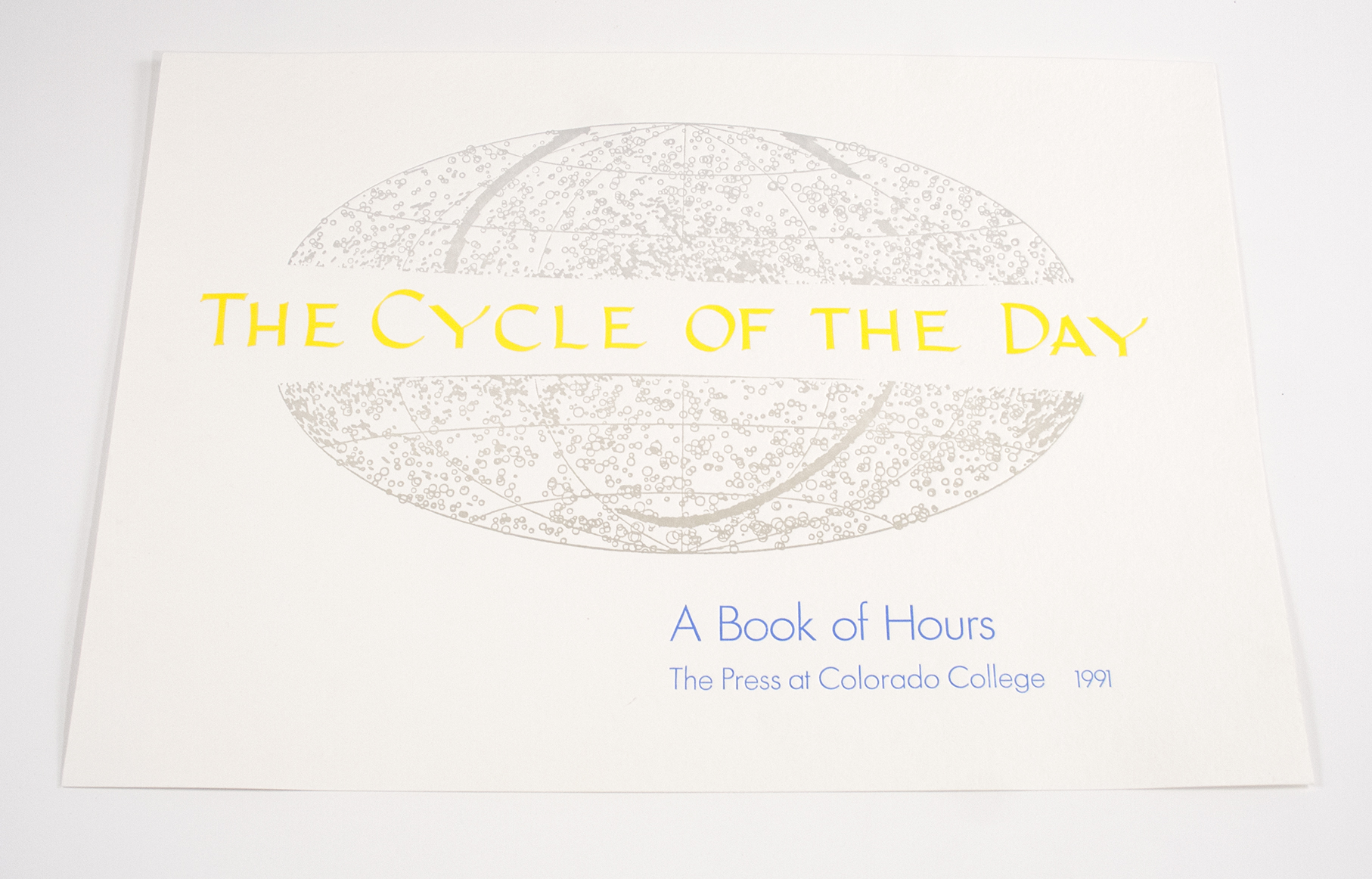



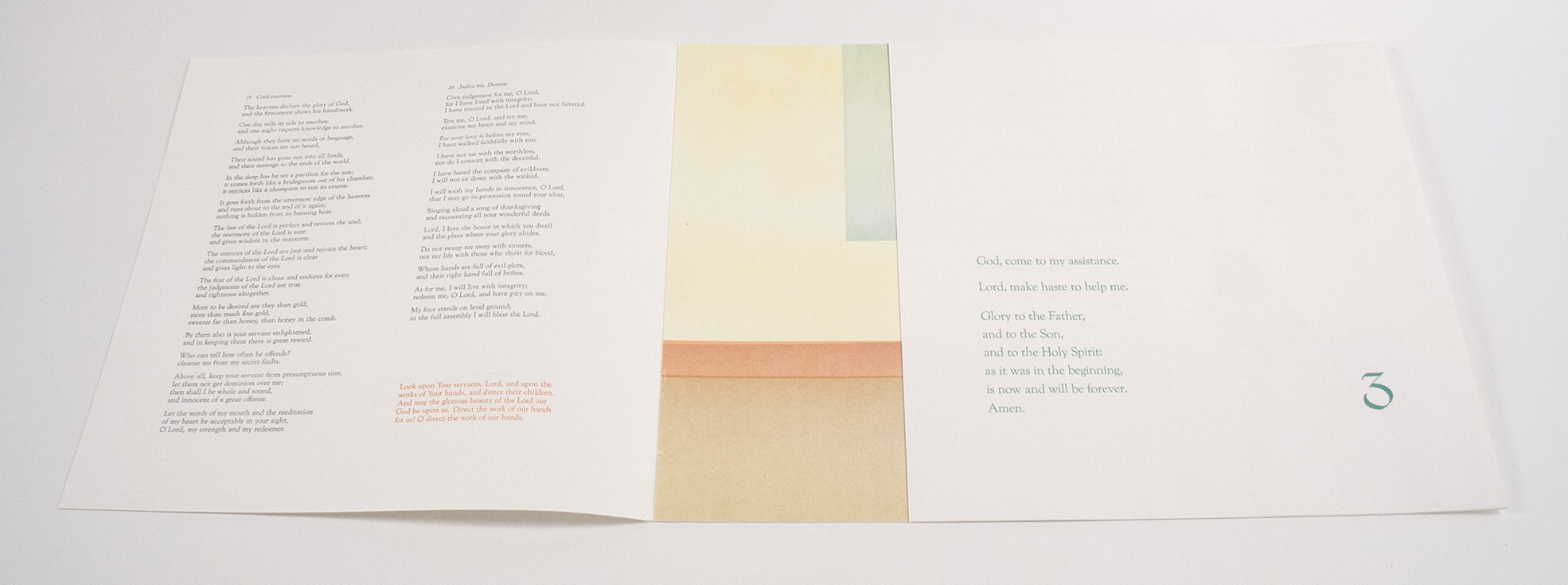
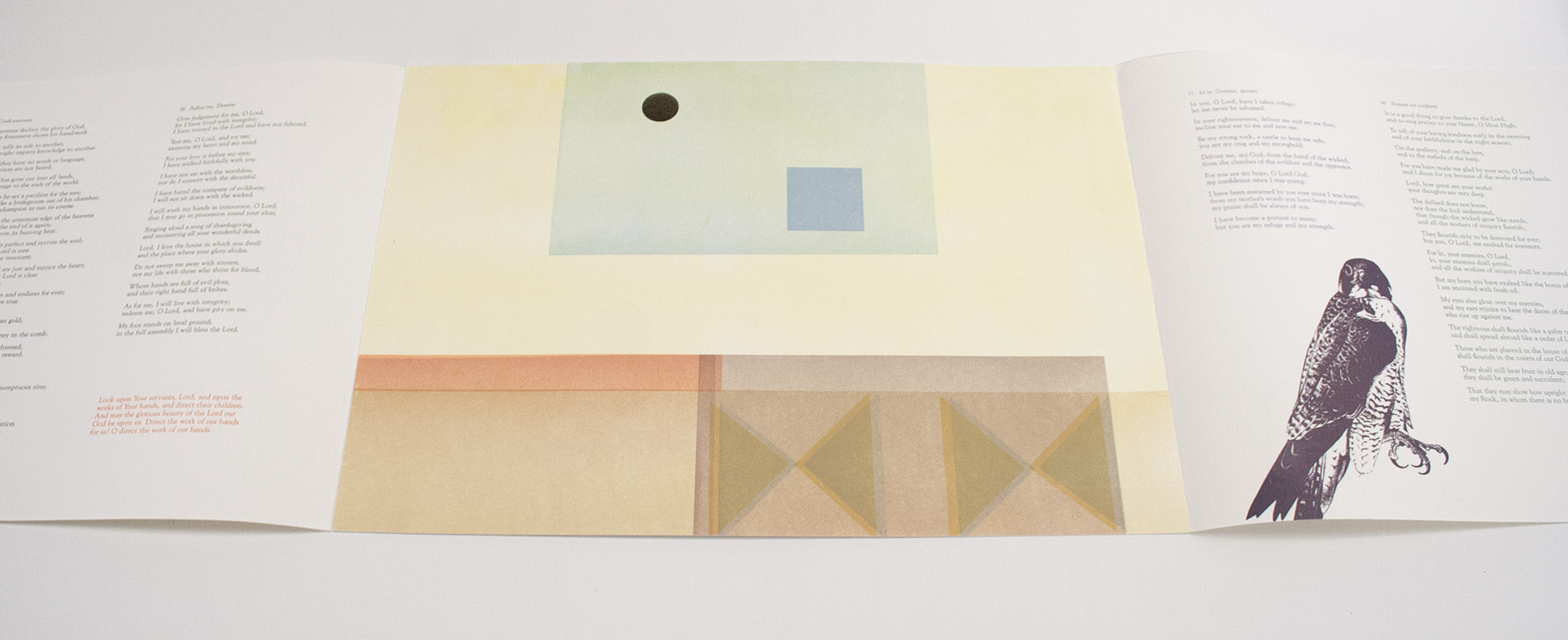




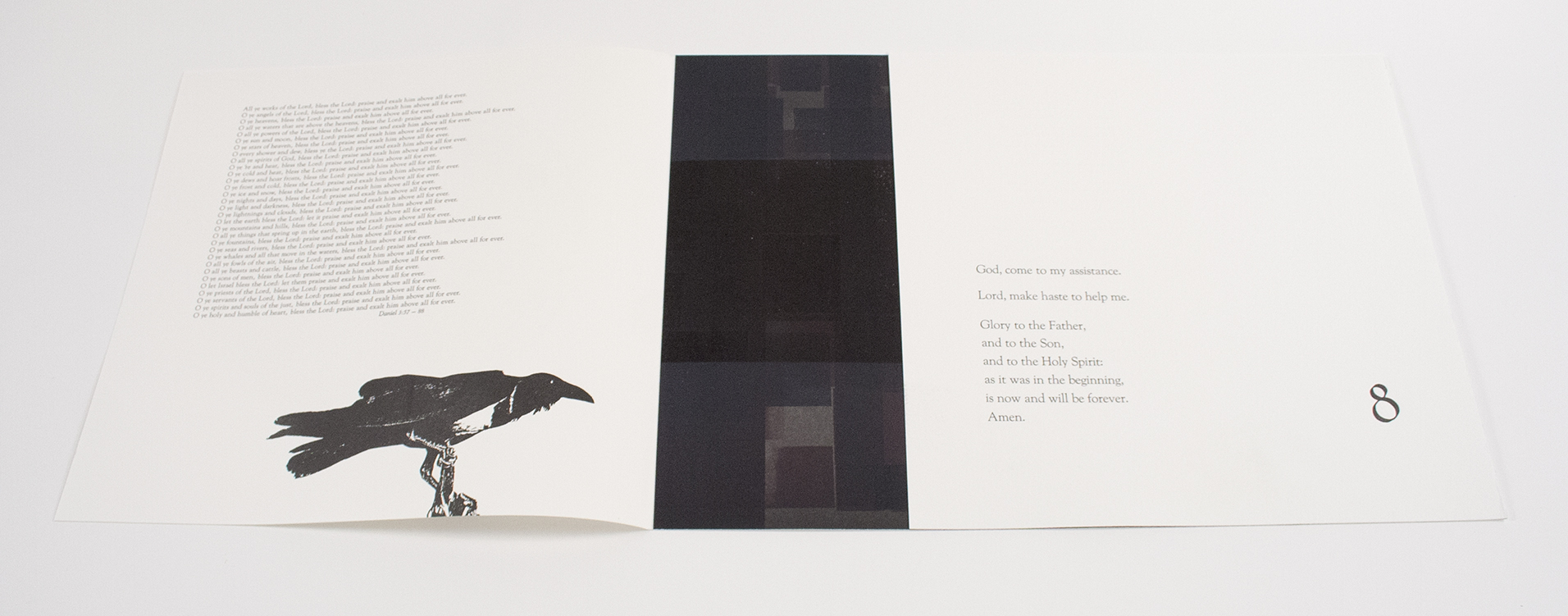
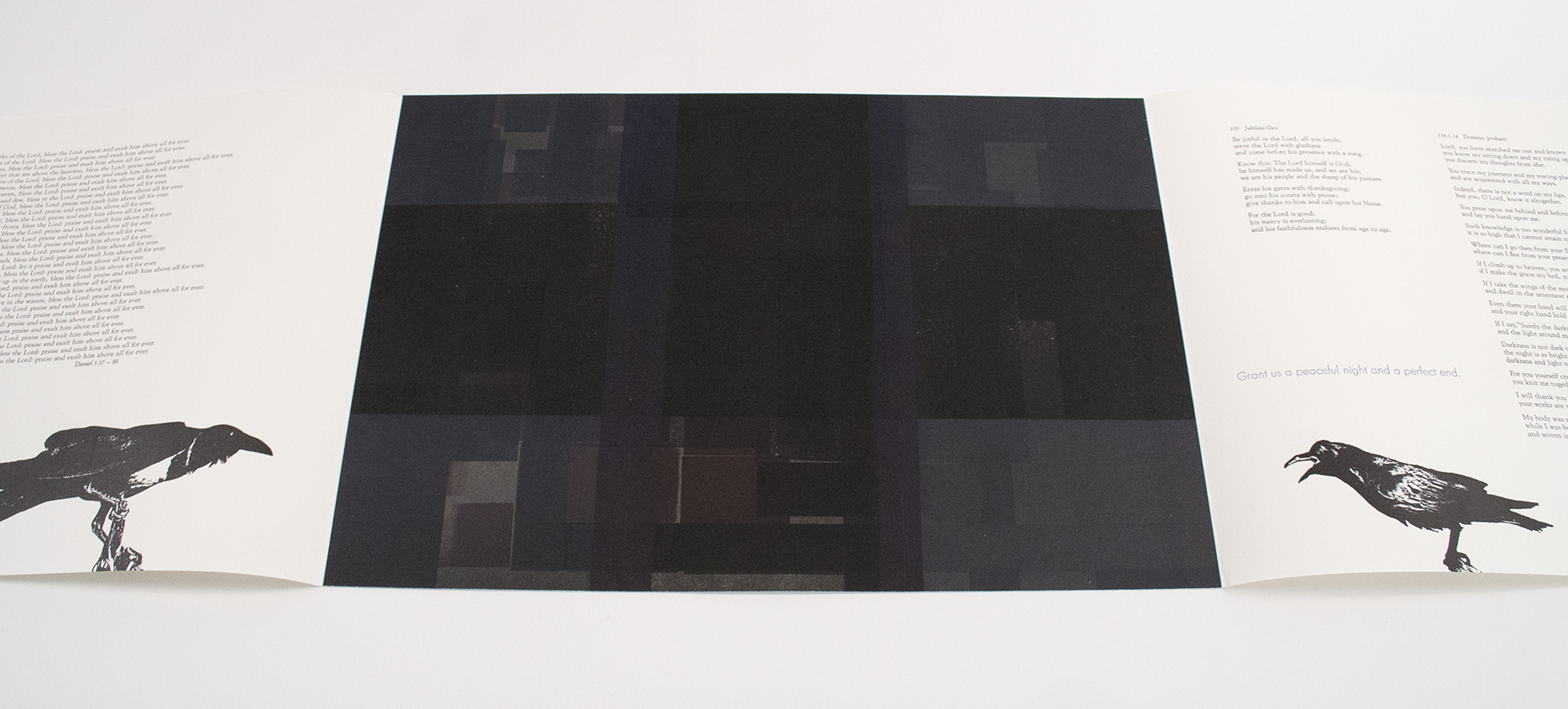
From the colophon:
“This Book of Hours is indebted, first, to The Rule of St. Benedict and then, probably, to the more than 750 Books of Hours printed for general sale by printing houses between 1460 and 1800. There was an audience for the private devotional book and printers found it profitable. In 1986 the Baltimore Museum of Art mounted an exhibition of the illuminated Book of Hours entitled Time Sanctified and Roger Wieck’s catalog for that exhibition is very useful in establishing the long-term popularity of the genre.
A contemporary book of hours faces a far less certain reception. Our current notion of time is more mechanical, more detailed, and much of our science has devoted itself to the precise measurement of time. Only in the area of circadian rhythms have we begun to note the importance, seemingly endogenous, of the daily cycle. The idea of time sanctified has been replaced by time biologized. In the end, however, we may find time no less sacred due to this form of investigation.
Each Book of Hours is an invention; no two are alike. The choices for inclusion of materials in this Book are those of the designer and printer, James Trissel, tempered by advice from friends. The opening diagrams and schemes are obvious references to the daily cycle. The emphasis upon the Psalms is traditional and meant to be ecumenical, although the Benedictines have been chanting the Psalter for over 1000 years and that influenced the choices here more than any other single factor. The color printing of the central panel of each section is entirely consistent with elements found in manuscript paintings of the hours. More generally, which painter has not understood time of day and its effect on color, both natural and pictorial?
This project was encouraged by the support of the Sheffer Fund, devoted to Catholic studies at Colorado College. A grant from that fund allowed the designer to buy the book’s papers and to travel. The title page sheet was handmade for us by Tom Leech; the balance of the paper is Johannot. The types are Goudy Old Style and Futura and the section titles are lettered by James Trissel.
Virtually all elements of this project, including the color plates, were printed letterpress. There are a few hand-done inclusions and the foil is hot-stamped. It is important to note that virtually all the diagrams and most of the type were printed from polymer plates which we made from negatives here at The Press. They type was set on our computer and the negatives were produced for us by a Linotronic printer at Service Typographers in Colorado Springs. While this technology is not new, it may be we have given it its first wholesale employment in a book project. I need to thank Dave Curnutt, Michele LeFebvre and Connie Crandall for their care and help with the prepress work. Jan Keder and Catherine Finney of Colorado College’s Tutt Library have been of great assistance and many of the images in this work come originally from the Tutt Library collection. Gwyn Mauritz, Travis Jordan, and Jenn Tseng devoted valuable time to the various forms of typesetting and to the presswork. Sally Hegarty has again proved indispensable to this complex and unpredictable task. Also, I must thank the hospitable monks of St. John’s Abbey who lent themselves to this project at a time when it had no name.
The eight times of day presented are the full complement of the regular canonical hours with Vigil added to account for the time between Compline and Matins. Conflating Matins and Lauds was our idea. These are generally the traditional hours for worship, but they also make sense in terms of the way we now live in time and experience its passage. The rising and setting of the sun, the unequal hours, the stages of the moon’s month and our celestial hemisphere are still as majestic and immutable as they have ever been.
There have been fifty copies printed of this book
and this is number …”
James Trissel, 1991